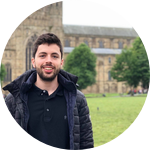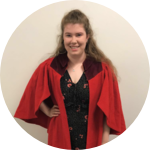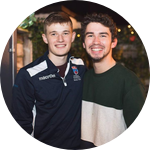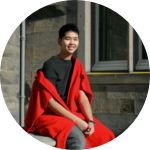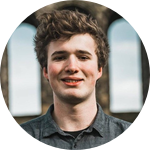About This Project
We are designing antibody domains stabilized by an internal isopeptide bond, an amide group between side chains. This structure is unusual for mammalian proteins, as the inside of proteins is hydrophobic. The motif is, however, common among certain prokaryotes. We will use a neural net to find residues to mutate to form isopeptide bonds. We hope if an internal isopeptide bond were inserted in a mammalian protein the half-life would be significantly greater, showing stabilizing.
Ask the Scientists
Join The DiscussionWhat is the context of this research?
Antibodies are frequently used in therapeutic contexts, as well as in assays during biochemical research. While they are relatively stable proteins, their half-life in the body (in the context of a biologic drug) could be extended if they weren't vulnerable to natural degradation mechanisms. We intend to insert an artificial bond into a single fragment of an antibody, as proof of concept that these proteins can be stabilized. This artificial 'isopeptide bond' is common to proteins extruded to the outside of some bacteria, but doesn't appear in mammalian proteins. This bond make the antibody less vulnerable to destruction in the body, which could create a longer lasting drug.
What is the significance of this project?
Antibody engineering has the potential to be an incredible tool both for pharmaceutical development and for biochemical tools such as 'enzyme linked immunosorbent assays.' The introduction of an isopeptide bond into a single domain of a mammalian antibody would be proof of concept for stabilization that would allow biologic drugs such as those used to treat autoimmune disease to last dramatically longer before being metabolized to inactive constituent parts. More stable antibodies also have the potential to create more robust assays for biochemical bench work, which would ultimately lower costs as the tests become less fragile.
What are the goals of the project?
This project will utilize a machine learning interface to identify the closest structural analogue to the antibody in question which already contains an isopeptide bond. Then we plan to use bioinformatic techniques to identify which residues must be altered to create a mutant antibody domain. Once these residues have been identified, we will express the mutated antibody fragments in E. coli, where they ought to remain soluble if they fold correctly. We will tag our antibodies with a fluorophore to see and quantify the soluble protein, which ought to contain the desired bond. We will test for the presence of this isopeptide bond within the folded antibodies using mass spectrometry.
Budget
We will be using the PCR kit to amplify our plasmids and then the restriction enzymes and site directed mutagenesis kit to alter them for isopeptide bond formation. We will express these plasmids in E coli cells to generate our proteins, and use the nickel chromatography column to purify our proteins. The plasmid miniprep kit will allow us to purify our plasmids and then send them off for sequencing to ensure that they have the mutations we intended to introduce. Conference registration is expensive, but will allow us to present our data to a group of peers in Boston next October!
Endorsed by
 Project Timeline
Project Timeline
Our project begins with using computational techniques and previously published structural data to plan which antibody fragments will be synthesized in the lab.
From June 3rd, 20 antibody fragments from rational design will be made to get the desired isopeptide bond to form. We will try a further 50-150 DNA sequences from the machine learning.
By August 9th we will have finished our characterization, and in November we go to the iGEM conference!
As we go we will update this page and our wiki.
Jun 03, 2019
Start Lab Work
Jun 06, 2019
Project Launched
Jul 25, 2019
Finish our protein synthesis of antibodies
Aug 09, 2019
Finish characterization of antibodies to determine successful formation of isopeptide bond
Oct 15, 2019
Finish writing up our results and publishing them on the wiki (visit us at 2019.igem.org/Team:St_Andrews)
Meet the Team
Team Bio
We're a group of undergraduates from the University of St Andrews competing in the 2019 iGEM competition. Our project revolves around synthesizing stable antibody fragments, and stems from our collective interest in biologic drug design. Some of us come from biological or chemical backgrounds, while others come from mathematical ones, but together we hope to be able to accomplish a lot this summer!
Morganne Wilbourne
Team Coordinator
Eleonora Shantsila
Modeling team co-leader and head of human practices
Thomas Storey
Modelling team member
Sarah Jackson
Modeling team member
Maggi Chalgunova
laboratory team member
Zsolt Semperger
laboratory team member
Amy Buck
Laboratory and Human Practices team member
Jack Briggs
modeling team member
Ben Gillen
modeling team member
Georgie Brown
laboratory team member
Veronika Lachina
modeling and laboratory team member
James Hammond
Modelling and lab member. Academic interests Systems and Developmental Biology. Recreational interests Chess, Hillwalking, and Lepidopterology.
Gregor Vagg
modeling team member
Camille Young
Laboratory team leader
Gavin Lamb
Modeling team member
Gordian Grüntuch
modeling and laboratory team member
Lab Notes
Nothing posted yet.
Project Backers
- 3Backers
- 3%Funded
- $61Total Donations
- $20.33Average Donation



